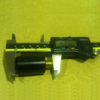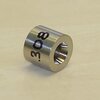I've only done straight walled handgun cartridges and the last few nights, I've read through some of my reloading manuals to wrap my head around how the bottle neck of most rifle cartridges changes the reloading process.
I don't get sizing and how the shoulder gets resized and or sized through the process. I didn't see this spelled out in my reloading books, so was hoping to get a really basic understanding of how rifle cartridges that are bottle neck differ from straight walled handgun cases.
I don't get sizing and how the shoulder gets resized and or sized through the process. I didn't see this spelled out in my reloading books, so was hoping to get a really basic understanding of how rifle cartridges that are bottle neck differ from straight walled handgun cases.










